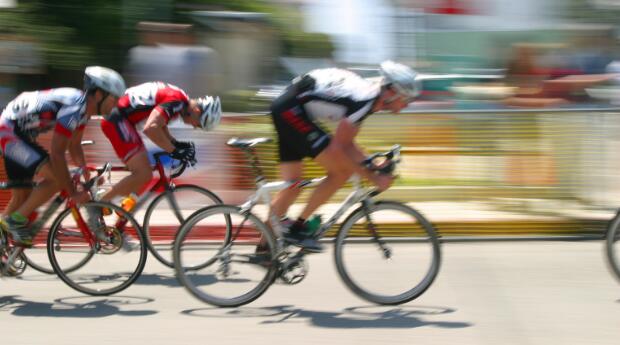
In the past decade, technical leaps have made it possible for engineers to create lightweight, accurate power meters that are reasonably affordable.
In most designs, sensors in a specially designed crank wheel or wheel hub measure your velocity and the force you're applying to the pedals and use this data to transmit a real-time power readout in watts to a display unit mounted to the handlebar.
Popular brands include the CycleOps Power-Tap, SRM, Ergomo and Polar. (There are also indoor cycles such as the CycleOps 300PT that feature power readouts).
More: 5 Reasons to Train with a Power Meter
If you train as you're supposed to train, you do a variety of structured bike workouts, each of them focused around one or more target intensities. You do long endurance rides at a moderate aerobic intensity, tempo rides featuring a block of riding at anaerobic/lactate threshold intensity, short hill climbs at VO2max intensity, and so forth. A power meter makes it very easy to find and hold the appropriate intensity in each workout type.
Calculating Power Range
"The first thing you have to do is go and test," says Hunter Allen, a cycling coach and co-developer, with Andy Coggin, Ph.D., of Cycling Peaks power training software. The simplest test you can use to determine your power training intensity levels is the 20-minute max test.
After a thorough warm up, ride for 20 minutes as hard as you can. Be sure to pace yourself so that you're not fading in the final minutes of the test. After cooling down, find your power average for the 20-minute maximum effort.
More: 11 Reasons to Buy a Power Meter
Next, use this number, a calculator, and the table below to calculate your target power range for each of seven training intensity levels. The table is adapted from the Training Peaks Web site. The right-hand column provides an example based on a hypothetical athlete who averages 260 watts in the 20-minute max test. Note that power is not needed as a guide to training at Level 7 (neuromuscular power) intensity because it corresponds to absolute maximum pedaling efforts that one can maintain for only a few seconds.
Power Based Training Levels
| Level | Name |
Target Power Range (as % of avg. watts in 20:00 max test) | Example (based on 260 watts avg. power in 20:00 max test) |
|
| |||
| 1 | Active Recovery | <55% | <143 |
| 2 | Endurance | 56-75% | 144-195 |
| 3 | Tempo | 76-90% | 196-234 |
| 4 | Lactate Threshold | 91-105% | 235-273 |
| 5 | VO2max | 106-120% | 274-312 |
| 6 | Anaerobic Capacity | >121% | >313% |
| 7 | Neuromuscular Power | N/A | |
Once you've worked out your target power ranges, use them during all of your cycling workouts, each of which (as mentioned above) should aim at one or two specific intensity levels. Don't be a slave to the numbers, however. If the target range is too hard on a given day, go a little easier, and if it's too easy, go a little harder.



